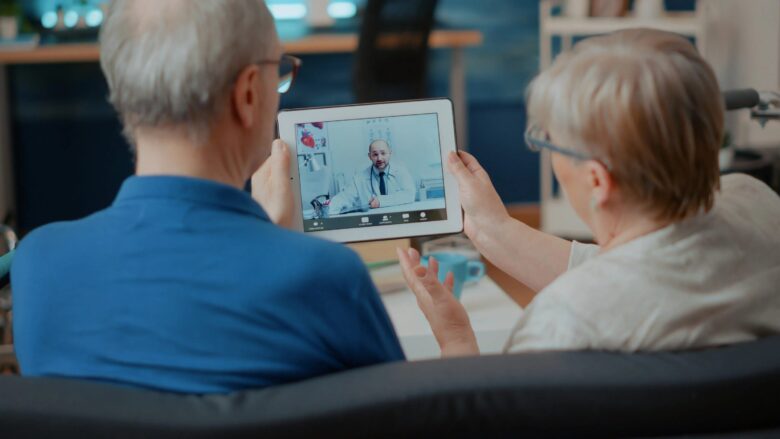In today’s healthcare landscape, a virtual medical assistant has become indispensable to supporting remote consultations. As the demand for telemedicine grows, these professionals provide the essential administrative and clinical support needed to ensure seamless, efficient, and accessible healthcare services.
By leveraging their expertise, virtual medical assistants allow healthcare providers to focus more on patient care and less on managing time-consuming tasks, significantly improving both the quality and delivery of healthcare.
Contents
What Is a Virtual Medical Assistant?

Source: helloviki.com
A virtual medical assistant is a healthcare professional who works remotely, offering administrative and clinical support to physicians and healthcare organizations. Unlike traditional medical assistants who work on-site, virtual medical assistants use digital tools to perform their tasks from any location.
They manage a range of duties, from scheduling appointments and updating patient records to coordinating telehealth services and assisting with billing processes.
The role of virtual medical assistants has expanded as telemedicine and digital health services have become more prevalent. Their ability to handle both routine and complex tasks helps healthcare providers maintain a streamlined workflow, ultimately enhancing patient care.
How Virtual Medical Assistants Support Remote Consultations
Remote consultations, also known as telehealth or telemedicine, allow patients to receive medical care from the comfort of their homes. Virtual medical assistants play a key role in facilitating these consultations by managing everything from appointment scheduling to follow-up care.
Scheduling and Managing Appointments
Virtual medical assistants take charge of booking appointments, sending reminders, and ensuring the physician’s schedule is optimized. This not only minimizes the risk of no-shows but also allows healthcare providers to manage their time more efficiently. By organizing appointments effectively, virtual medical assistants help ensure that telehealth services run smoothly.
Pre-Consultation Preparation
Before a remote consultation begins, a virtual medical assistant gathers all the necessary patient information, such as previous medical history, lab results, and any relevant documents. This ensures that the physician has immediate access to all essential data during the consultation, making it more efficient and productive.
Virtual medical assistants also contact patients ahead of their scheduled consultations to confirm details and answer any questions. This pre-consultation communication helps set clear expectations for the upcoming virtual meeting, creating a more professional and organized experience for the patient.
Technical Support for Patients
Virtual medical assistants often serve as the first point of contact for patients unfamiliar with telehealth platforms. They assist in setting up video calls, troubleshooting connection issues, and providing basic technical guidance. This ensures that patients can connect with their healthcare providers without unnecessary delays or confusion, improving the overall quality of the consultation.
Documentation and Follow-Up Care
After the consultation, virtual medical assistants are responsible for documenting the session’s key points, updating patient records, and recording any diagnoses, prescriptions, or treatment plans. They also manage follow-up care, scheduling additional appointments as needed and ensuring that patients receive their medications and any required testing or treatments.
By taking on these responsibilities, virtual medical assistants ensure that healthcare providers have up-to-date patient information and that no critical details are missed during the transition between consultations.
Benefits of Virtual Medical Assistants for Healthcare Providers

Source: healthworkscollective.com
The use of virtual medical assistants has proven to be a valuable asset for healthcare providers, particularly when it comes to managing the growing demand for remote consultations.
Increased Efficiency
Virtual medical assistants relieve physicians and healthcare staff from administrative burdens. By handling appointment bookings, patient communications, and documentation, these assistants allow healthcare providers to concentrate fully on patient care. This efficiency is especially critical in busy medical practices or hospitals where every minute counts.
Cost-Effective Staffing
Hiring a virtual medical assistant can be more cost-effective than employing on-site staff. Healthcare providers can reduce overhead costs, such as office space and equipment, while still receiving high-quality support. This flexibility makes virtual medical assistants an attractive option for small practices or independent physicians looking to maximize their resources.
Better Patient Experience
With virtual medical assistants handling administrative tasks, healthcare providers can dedicate more time to patient care. This results in a better experience for patients, who benefit from more focused attention during their consultations. Additionally, patients appreciate the ease of scheduling and the personalized support they receive from virtual assistants before and after their appointments.
Improved Workflow
Virtual medical assistants create a more streamlined workflow by managing key tasks like appointment scheduling, documentation, and follow-ups. This reduces interruptions during patient care and ensures that the day-to-day operations of the medical practice run smoothly. The result is a more organized and efficient healthcare environment.
Advantages for Patients in Remote Consultations

Source: ossisto.com
Patients also benefit significantly from the involvement of virtual medical assistants in their healthcare experience.
Convenient Access to Care
Virtual medical assistants make it easier for patients to access care, regardless of their location. Whether a patient lives in a rural area or is unable to visit a healthcare facility in person, virtual medical assistants ensure that remote consultations are easy to arrange and access.
Personalized Attention
Virtual medical assistants provide individualized attention, answering patient questions and guiding them through the consultation process. This personalized support makes patients feel more comfortable with the healthcare system, particularly if they are unfamiliar with telehealth.
Faster Response Times
By managing communication between patients and healthcare providers, virtual medical assistants ensure that patients receive faster responses to their inquiries. This quick turnaround is essential for maintaining trust and satisfaction, especially in situations that require timely medical advice or interventions.
Continuity of Care
Virtual medical assistants help ensure continuity of care by organizing follow-up consultations, medication refills, and treatment plans. Patients receive regular updates and reminders, ensuring that their healthcare needs are met without unnecessary delays or gaps in treatment.
Challenges of Using Virtual Medical Assistants

Source: fptsoftware.com
Despite their numerous advantages, there are certain challenges that healthcare providers may face when incorporating virtual medical assistants into their practice.
Communication and Coordination
Working remotely can sometimes make communication between virtual medical assistants and healthcare providers more challenging. However, this can be resolved through effective use of communication platforms and clear protocols. Consistent check-ins and detailed documentation also help minimize potential miscommunications.
Security and Privacy Concerns
Ensuring the privacy and security of patient data is a top priority when using virtual medical assistants. Healthcare providers must ensure that virtual assistants are trained in handling sensitive information and that they comply with all necessary regulations, such as HIPAA, in the United States.
Using secure telehealth platforms and encrypted communication channels can mitigate these risks.
Integration with Existing Systems
Integrating virtual medical assistants into a practice’s existing electronic health record (EHR) systems and workflows may require some initial adjustments.
Training and proper onboarding are essential to ensure that virtual assistants can efficiently use the technology and tools that the healthcare provider relies on.
Conclusion

The role of virtual medical assistant in modern healthcare is rapidly growing, particularly as remote consultations become more common. These professionals provide essential support, handling administrative duties that allow healthcare providers to focus on what they do best: caring for patients. By improving efficiency, reducing costs, and enhancing the patient experience, virtual medical assistants are revolutionizing the way healthcare is delivered.
